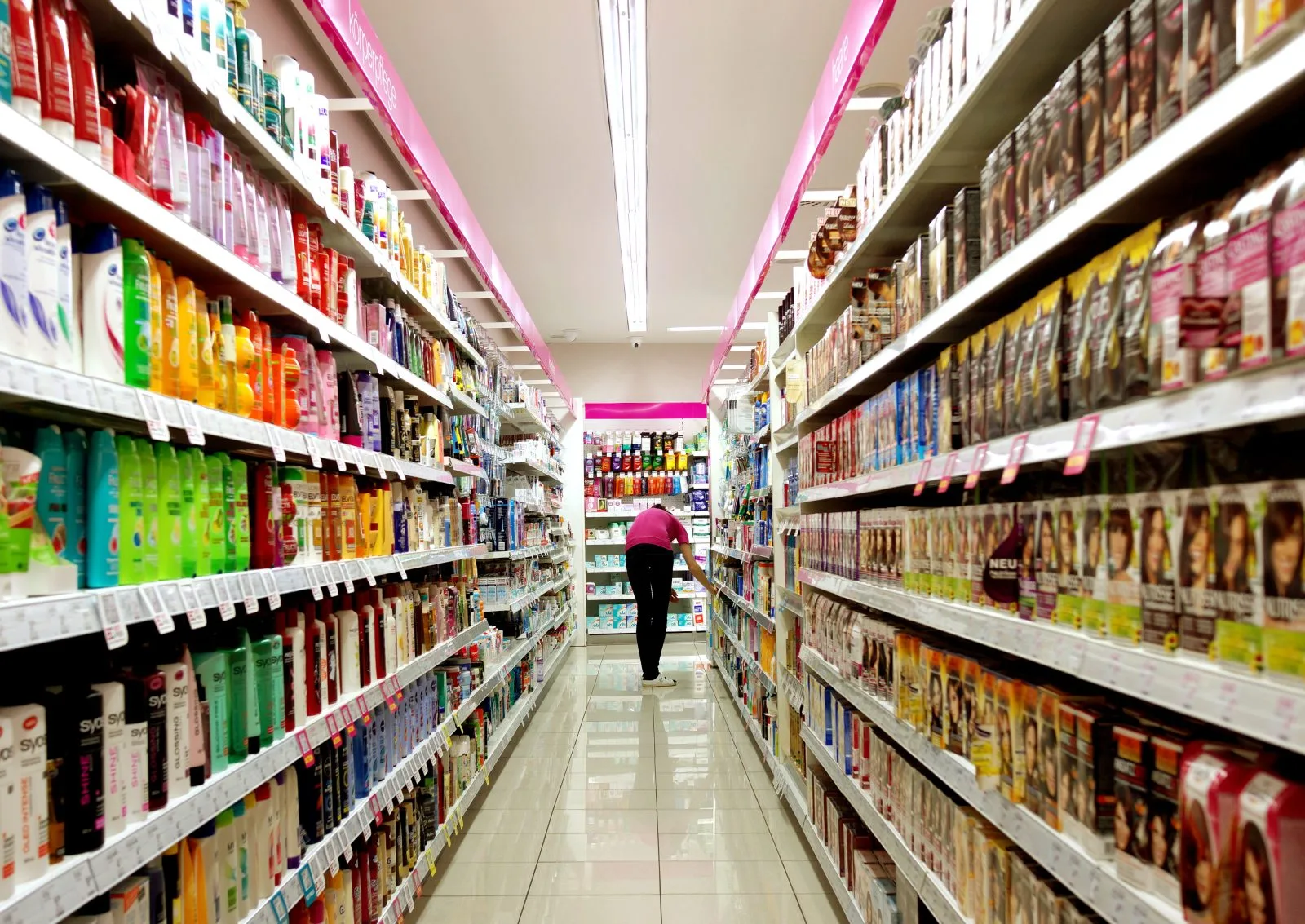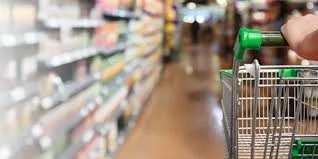FMCG Insights 2025: Profitability, Growth, Trends, and Staples
In 2025, Malaysia and Singapore’s FMCG market is being redefined by profitability shifts, lifestyle-driven growth, and new consumer values. Learn where demand, innovation, and opportunity converge.

The New Era of Everyday Commerce
Fast-moving consumer goods (FMCG) have always been the heartbeat of retail. Yet in 2025, the pulse feels different. Consumers in Malaysia and Singapore are spending more deliberately — weighing wellness, sustainability, and convenience alongside price. E-commerce is now the default channel for many, while physical stores evolve into experience hubs or last-mile fulfilment centers.
For eCommerce sellers and business owners, this isn’t merely a post-pandemic rebound; it’s the dawn of a consumer recalibration. Choices are guided by health, ethical sourcing, digital discovery, and instant availability. Against that backdrop, four forces define the year ahead: profitability, growth, trends, and the staples that endure.
Profitability: Where the Margins Really Are
While FMCG is traditionally volume-driven, 2025 shows that premiumisation and specialisation deliver the healthiest margins.
Category | Key Drivers | Profitability Level | Example Brands |
|---|---|---|---|
Health & Wellness | Preventive health, supplements, functional beverages | Blackmores Bio-C, Berocca, Kinohimitsu Collagen, Spritzer+ HydroBoost | |
Beauty & Cosmetics | Skincare science, halal & K-beauty, self-care rituals | L’Oréal Revitalift, Safi Rania Gold, Wardah Brightening, The Ordinary | |
Packaged Food & Beverage | Daily consumption, festive spikes, snack culture | Milo UHT, Maggi Hot Cup, OldTown White Coffee, Nescafé Blend 43, F&N Ice Mountain | |
Household & Home Care | Hygiene awareness, eco-refills, brand trust | Dettol Antibac Spray, Breeze PowerClean, Dynamo Pods, Walch Eco-Series |
What this means:
- Health and beauty command premium pricing and build lifetime customers.
- Food & beverages rely on frequency — thin margins, massive throughput.
- Home care sustains loyalty through necessity and consistency.
- Brands that merge premium positioning with repeat purchase behaviour — e.g., functional beverages or derma-grade skincare — capture both volume and margin, a rare dual win.
Growth: The Next Frontiers of Demand
NielsenIQ and Euromonitor data point to four FMCG segments expanding at double-digit growth rates across Southeast Asia.
Segment | YoY Growth (Est.) | Profitability Level | Example Brands |
|---|---|---|---|
Pet Care | +15 % | Pet-parenting boom, premium nutrition | Pedigree Vital, Whiskas Tuna, SmartHeart Gold (online best-sellers) |
Health Supplements | +13 % | Preventive lifestyle, aging population | VitaHealth Multis, Guardian Immunity+, Eu Yan Sang Tonic |
Convenience Meals | +9 % | Urbanisation, time-poor consumers | Mamee Chef, Ayam Brand Ready-Meals, CP Frozen Kits |
Eco Household PRoducts | +8 % | Green awareness, refill culture | Method Refill Pouches, Walch Eco Concentrate |
Men's Grooming & Beauty Tech | +7 % | Self-care, social influence | Philips OneBlade, Foreo Luna, Xiaomi InFace Cleanser |
The data paints a clear picture: consumers are buying identity, not just utility. Owning a pet, tracking wellness metrics, or choosing a refill pack each signal lifestyle values. For sellers, these emotional anchors are marketing gold.
Insight: Product storytelling that connects to lifestyle (“for your fur-kids,” “for mindful living,” “for eco homes”) converts better than functional descriptions alone.
Trends Shaping the 2025 FMCG Landscape
Trends are no longer seasonal buzzwords; they are structural shifts in how consumers live, shop, and trust brands.
Trend | Description | Strategic Implication |
|---|---|---|
Digitalisation & Omnichannel | Online marketplaces, social commerce, data-driven retailing now mainstream | Integrate inventory and CRM across Shopee, Lazada, TikTok Shop, and in-store POS systems |
Sustainability | Eco packaging and ethical sourcing become purchase filters | Audit supply chains and showcase eco-credentials openly |
Private Label Momentum | Retailers introducing value-driven alternatives | Build store brands with modern design and transparent quality standards |
Health Consciousness | Low-sugar, functional, “free-from” products | Reformulate SKUs and add nutrient callouts (front-of-pack labels matter) |
Convenience Culture | On-demand expectations and quick commerce | Partner with GrabMart, Panda Mart, or Jaya Grocer Online for last-mile reach |
Digital at the Core
Over 60 % of consumers in both markets shop online weekly, with mobile devices driving the majority of sessions. Sellers integrating chat commerce, automated fulfilment, and AI-driven recommendations are pulling ahead.
“Omnichannel is not an option — it’s oxygen,” remarks a Singapore-based retail CEO. “Our customer might see a TikTok video, check price on Lazada, and complete checkout in our app within five minutes.”
Sustainability as Strategy
A YouGov Malaysia study finds 67 % of consumers prefer sustainable brands and over half will pay a premium. Leading grocers such as Lotus’s and AEON now stock refill stations and “eco aisles.” The message is clear: eco-credibility sells.
The Return of Private Labels
Post-inflation, 54 % of Asia-Pacific consumers report being “more open to store brands.” Retailers are responding with redesigned packaging and cleaner ingredient lists, positioning private labels as smart, not cheap. For smaller FMCG brands, this is both competition and collaboration potential — co-packing, white-labeling, or exclusive retailer SKUs can drive scale.

Staples: The Unshakable Core of FMCG
Trends attract attention, but staples fund the business. Rice, milk, detergents, and instant coffee maintain their dominance due to necessity, trust, and repetition.
Staple Category | Purchase Frequency | Cultural or Functional Role | Example Leaders |
|---|---|---|---|
Rice & Cooking Oil | Weekly | Foundation of Asian meals | Jasmine Super, Cap Buruh, Knife Cooking Oil |
Instant Noodles & Coffee Mixes | Weekly | Low-cost comfort food | Maggi Hot Cup, Nissin Seafood, Aik Cheong 3-in-1 |
Toiletries & Personal Care | Monthly | Hygiene and daily use | Shokubutsu Body Wash, Colgate Total, Dettol Soap |
Laundry & Cleaning | Monthly | Household maintenance | Breeze PowerClean, Top MicroClean, Downy Concentrate |
Milk, Bread, Eggs | Weekly | Breakfast essentials | Dutch Lady, Farm Fresh, Gardenia, Nutriplus Omega Eggs |
Even in e-commerce baskets, staples generate the highest order frequency. During festive peaks like Hari Raya or Chinese New Year, demand for these basics surges 20–40 %. Retailers often use them as loss leaders to drive traffic — compensating with cross-selling of higher-margin goods (e.g., organic sauces or premium snacks).
What Professional Retailers Can Learn from These Shifts
Blend Insight with Agility
Relying solely on gut instinct is obsolete. Use POS and marketplace data to track basket trends weekly. Rapid SKU rotation based on micro-data (for example, rising pet-treat orders in urban KL) separates leaders from laggards.
Curate the Online Shelf
A cluttered product page kills conversion. Top sellers such as Guardian Singapore curate category landing pages — three hero SKUs, clear sub-filters, and a trust seal (“Dermatologist-Tested”). Mimic that focus.
Activate Storytelling Commerce
Consumers scroll stories, not spec sheets. Position your product narratives around lifestyle transformation: “From 9 p.m. snack guilt to gut-friendly indulgence” sells better than “low sugar.”
Expand Regionally Through Partnerships
Malaysia–Singapore logistics synergies are stronger than ever. Local fulfilment providers like Secai Marche and cross-border cold-chain solutions now enable SMEs to scale regionally.
Stay Authentic on Price vs Purpose
Economic pressure makes shoppers pragmatic, yet they still want to feel good about purchases. Pair affordability with transparency — disclose origin, materials, and community impact. Trust converts better than discounts.
Strategic Tables at a Glance
Table A — Profitability vs Frequency Matrix
Category | Purchase Frequency | Profit Margin Potential | Best Channel |
|---|---|---|---|
Health Supplements | Monthly | High | E-commerce (D2C subscriptions) |
Skincare & Cosmetics | Monthly | High | Social commerce & boutiques |
Packaged Food | Weekly | Medium | Supermarkets & online grocers |
Home Care | Monthly | Medium | Hypermarkets & refill stations |
Pet Care | Monthly | High | Online marketplaces & pet specialty stores |
Table B — Top Emerging FMCG Themes
Theme | Consumer Motivation | Example Brand Action |
|---|---|---|
Sustainable Convenience | Quick use + eco conscience | Lotus’s refill station launch 2024 |
Affordable Premium | Value without compromise | FairPrice Finest private label organic range |
Personal Wellness Everywhere | Health as daily habit | Milo Nutri Up and Nestlé Wellness Kits |
Digital Discovery | Shop where you scroll | TikTok Shop beauty livestreams Malaysia |
Pet Humanization | Treat pets like family | SmartHeart “family bonding” campaign SG |
The 2025 Playbook for FMCG Success
Think Portfolio, Not Product
Combine staples (for volume) with aspirational categories (for margin).
Invest in Consumer Data
Loyalty programs and digital receipts feed insights faster than yearly reports.
Design for Mobile First
Optimize thumbnails, one-tap checkout, and WhatsApp order flows.
Experiment with AI and Personalisation
Recommenders can lift average basket value by 15–20 %.
Nurture Sustainability as Equity
Transparency is the new marketing — let your packaging, sourcing, and story prove it.
Profit Meets Purpose
As Malaysia and Singapore move deeper into digital maturity, FMCG brands face a defining test: Can you grow fast without losing trust?
Consumers will continue buying essentials — but they’ll reward the companies that deliver them ethically, efficiently, and with empathy. The winners of 2025 aren’t just those with the biggest shelves; they’re the ones with the clearest purpose and the smartest use of data.
From premium collagen drinks to eco-refill detergents, the direction is unmistakable: value now lives at the intersection of health, convenience, and conscience.
For forward-thinking sellers, that intersection is the new address of profit.
Sources: NielsenIQ • Euromonitor • Statista • Kantar • Commission Factory • YouGov • Sellercraft Internal Observations